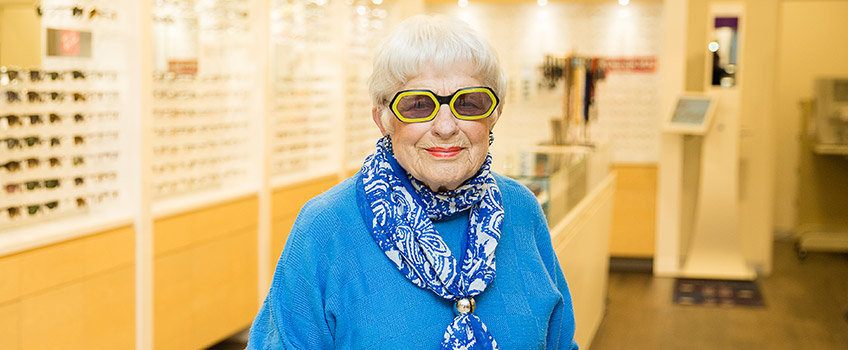Our team have compiled a list of questions that we are often asked by patients and the local community. We hope you find this useful; however if you don’t find the answer you are looking for, please feel free to contact us with any questions you may have.
We recommend that you have a comprehensive eye examination every two years. This is due to the fact that several eye diseases can develop gradually without any noticeable symptoms, until they are much more advanced.
Early detection is key for the management of any eye disease. The optometrist at times may recommend more frequent eye examinations due to issues with your eye health, or the fact that your eye focus is changing quicker than expected. However, if you notice a change in vision, comfort or the appearance of your eyes, it is important that you come in to the practice so we can address your concerns.
If you are a contact lens wearer, your eyes should be examined every six to twelve months (depending on your contact lens type) to ensure your vision and eye health are still optimal.
Children will often have more frequent eye examinations, as their eyes can change quickly in the periods of development.
Put simply – no.
It is important to note, there are many forms of spectacle prescriptions. Firstly, the most common is the corrective lens prescription which is used to eliminate blurred vision and help prevent eye strain and possible headaches. If worn correctly, as recommended by your optometrist, the glasses will not weaken your eyes.
Secondly, there is the preventative lens prescription. This is often used in cases of childhood vision difficulties, and is prescribed in order to rectify problems such as trouble focussing.
At a young age it is important to wear prescribed glasses as recommended so that your vision can properly develop. Often patients comment that after wearing new glasses their sight without glasses seems so much blurrier than they previously remembered.
Think of it like getting a brand new TV – your old one seemed perfectly fine, but once seeing the improved clarity, colour and high definition on your new TV, the old one doesn’t seem so great. It’s not that the old TV has changed, it’s just your perception of it has.
Your child should have their first eye examination generally at about the age of three, or earlier if you have any concerns about their vision and/or the appearance of their eyes. Your child should then receive a comprehensive eye exam at least every two years.
School screenings are helpful to detect any severe vision problems early, however passing this screening does not necessarily mean that there isn’t an underlying issue. It is therefore recommended that your child continue to have regular eye exams with an optometrist.
Children assume their vision is the same as everyone else’s, so it’s common that visual problems go unnoticed. Some of the symptoms which may indicate a problem with your child’s eyes include:
- rubbing eyes
- squinting
- skipping words or losing their place when reading
- headaches
- watery eyes
- eyes which turn in or out
- getting close to the page when reading or writing.
80% of a child’s learning is through vision. It therefore makes sense to ensure they are seeing the world how it should be.
Extensive computer, tablet or close work will not damage your eyes, however overexposure to digital devices can cause physical discomfort which we refer to as ‘digital eye strain’. Symptoms can include headaches (generally caused by eye strain or squinting), eye fatigue, neck/shoulder/back pain, blurred vision, or dry itchy eyes.
To avoid digital eye strain, we recommend taking regular ‘breaks’. If possible, you should look up from extended near or computer work and look into the distance, avoid holding reading material too close and ensure that you are wearing a current lens prescription.
Everyone deserves the most comfortable vision possible. That’s why we have lenses available for anyone that spends time looking at digital screens, whether you have a prescription or not. You live in the digital age. Shouldn’t your eyes?
One example of the new lenses available is the Eyezen lens. Click here for more information www.eyezen.com.au
All glasses are not the same. The quality of the lenses is not the same wherever you go, and as is always the case, you get what you pay for. To meet health fund cost parameters, providers of these so called ‘free’ spectacles have to source the cheapest of frames with the most basic, uncoated lenses.
It is not always possible to provide you with the best optical solutions for the price that a health fund determines is ‘enough’. This means the carefully devised prescriptions for your spectacles are then compromised by inferior material and poor quality frames that do not last. In most cases, if you were to compare our price for the finest quality product to an equivalent at a health fund provider, we will likely be cheaper.
At Kevin Hackett Optometrist, we will always advise you on the products that best suit your everyday and lifestyle needs, as well as providing you the best quality lenses with the finest visual properties.
Please note all spectacles purchased at Kevin Hackett Optometrist are claimable through any Health Fund










